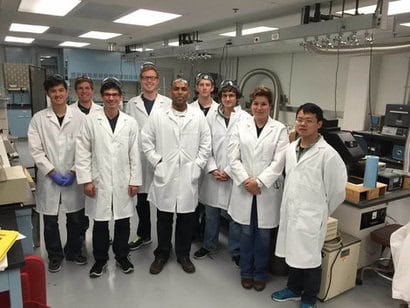
HyperSolar, the developer of technology to produce renewable hydrogen using sunlight and any source of water, has announced that the recent stability test of of its proprietary fully integrated hydrogen production device has surpassed 365 hours before any degradation.
The design of the device will serve as the foundation of the Company’s first generation commercial renewable hydrogen generator.
The stability test demonstrated over 100 hours of stable hydrogen generation under continuous simulated sunlight illumination in April 2018, and soon achieved over 294 hours of stable operation under peak sunlight in May 2018. In June, HyperSolar reached its goal of passing 365 hours of stable operation under peak sunlight. Peak sun hours vary from 2~ 6 hours by region in the United States and 365 hours of operation under peak sunlight equals to approximately 2~5 months of stable operation of the their proprietary hydrogen generation panel.
“As we move closer to building a full demonstration pilot plant with this technology, our goal is to surpass 1000 hours of stable operation which is over 6 months of lifetime of the cells and catalysts in the hydrogen generation panel with 5 hours of peak sunlight in sunny states such as California” commented Tim Young, CEO of HyperSolar. “The lifetime of the cells and catalysts are directly linked to the economics, and the increased lifetime will significantly lower the cost for hydrogen production.” “We are now beginning work with a commercial coatings company to more uniformly coat the cells with our stability polymer for longer stable operation.”
The Company is now focused on increasing long-term stability, which is critical for commercial adoption. Due to the low cost of a-Si solar cells, many hydrogen pioneers have attempted to use them in solar hydrogen systems but have failed in achieving long-term stability in standalone solar powered water-splitting devices. Based on research and feedback from peers, the Company believes that its results with a-Si cells are some of, if not, the most significant in the world.
